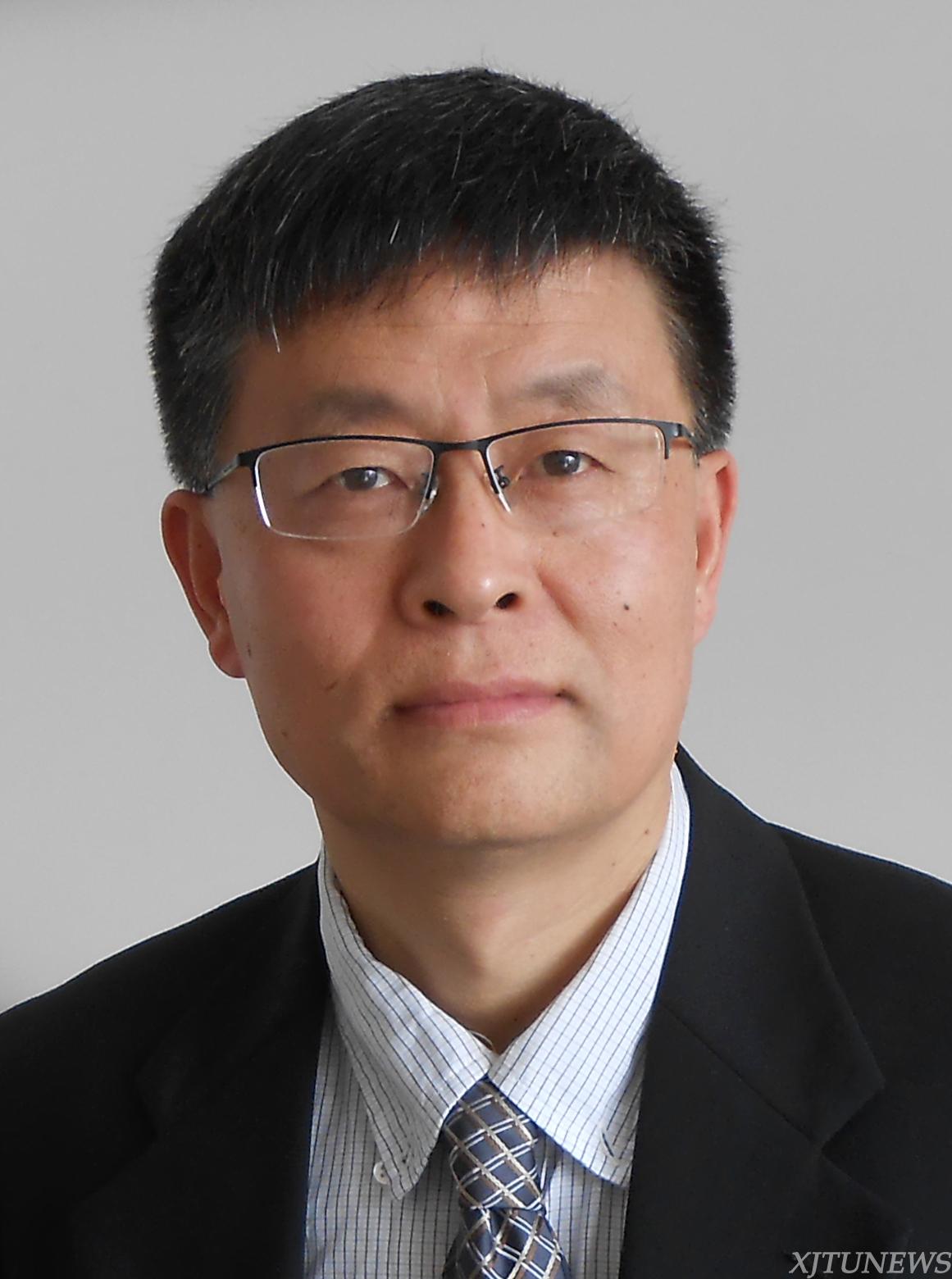
程 海 教授 Prof. Hai Cheng
奥地利科学院院士
AGU 会士
西安交通大学 全球环境变化研究院

程 海 教授 Prof. Hai Cheng
奥地利科学院院士
AGU 会士
西安交通大学 全球环境变化研究院
Institute of Global Environmental Change
Xi'an Jiaotong University
Address: No.19 Building, Western China Science and Technology Innovation Harbour, No.999 Siyuan Round South Road, Fengxi New City, Xixian New Area, Xi'an, 712000, Shaanxi, China
Tel: 86-29-88965119
E-mail: cheng021@xjtu.edu.cn
Lab Website: http://isotope.xjtu.edu.cn
地址:陕西省西安市西咸新区沣西新城思源环南路999号中国西部科技创新港19号巨构
联系电话:029-88965119
邮编:712000






Professor Hai Cheng has been at the leading edge in the U-series technical developments over the past three decades. He addressed many fundamental questions in paleoclimatology, paleoceanography, and global climate change research. His most widely recognized technical achievement is his role in the improvement of U-series dating techniques in the 231Pa and 230Th dating systematics including the re-determinations of 230Th and 234U half-lives, which have been widely accepted and used by the U-series community.
He is one of the world-leading experts in paleoclimate studies of speleothem worldwide, and has made many groundbreaking scientific discoveries. On the basis of state-of-the-art U-series dating techniques, he has played an important role in the reconstruction of the climate history in numerous climate domains using speleothem records, including the longest East Asian (640 ka) and Indian (280 ka) monsoon records, the longest Westerly climate records from West China (500 ka), central Asia (350 ka) and North America (335 ka), the longest record from the Amazon Basin (250 ka). These records are milestones in the paleoclimate reconstruction in their climate systems and have played an important role in understanding, correlating and calibrating global climate variability. He has played a leading role in the recent 14C calibration using speleothems, which provided a critical 14C dataset for reconstruction of atmospheric 14C back to the 14C dating limit of around 54,000 years ago. Recently, he and colleagues developed triple-oxygen-isotope analytical technique for speleothem, and obtained for the first time a set of 17Oexcess data, which provided new insights (additional to δ18O) into hydroclimate changes and underlying dynamics in many climate systems.
He has provided innumerable 230Th dates for collaborators who have made groundbreaking discoveries on paleoclimatic change on a wide range of timescales from Asia, South America, Arabia, Africa, North America, Central America, Europe, the tropical Pacific, and other locations, as well as anchoring archeological records of human evolution in China, India and elsewhere.
The broad international significance of his contributions are more than 620 publications, including 29 in Science and Nature, and more than 70 in PNAS, Nature and Science Series Journals (H-index=113 and citations >80000, Google Scholar). He is one of “Highly Cited Researchers” (2014-2023, Thomson Reuters/Clarivate Analytics) and “Highly Cited Scholars in China” (2015, 2016, 2017, 2018 , 2019 , 2020, 2021, 2022 and 2023, Elsevier). His world citation rank is 20th (highest top 5) in the geoscience field (ESI, Web of Science). He has been elected as the Corresponding member of The Austrian Academy of Sciences in 2022, and has been awarded the Milankovitch Medal of EGU, which indicates his highly recognize by the international academic community.
Recent Honors:
The Chinese National Science Fund for Distinguished Oversea Young Scholars (2003); The Gary C. Comer Abrupt Climate Change Fellowship (2007); Thomson Reuters China Citation Laureates 2014 Highly Cited Researcher; Thomson Reuters China Citation Laureates 2014 International Citation Impact Award (The only one from the entire Chinese geoscience community up to now); Sanqin Friendship Award (2014); Geochemical Fellow of Geochemical Society and European Association of Geochemistry (2015); Ten major scientific and technological progresses of China's colleges and Universities (2016); Highly Cited Researches (2014-2023) (Thomson Reuters/Clarivate Analytics); Highly Cited Scholars in China (2015-2023) (Elsevier); AGU Fellow (2017). Best Researcher Award of Xi’an Jiaotong University 2018. MEL Distinguished Visiting Fellowship, 2019 AGU Eminiani Lecture, 2019 (to honor the life and work of the renowned paleoceanography/paleoclimate researcher), First-class science and technology award (2020, Shaanxi Academy of Sciences) ; MEL Distinguished Visiting Fellowship (2020); The 10 Most Astonishing Archaeological Discoveries of 2021 (by Archaeology); Member of The Austrian Academy of Sciences (2022); EGU Milutin Milankovic Medal(2022).
程海教授在过去三十年里一直处于铀系技术发展的前沿。他发展了国际领先水平的U系质谱测量技术,提供了许多重要和精确的晚第四纪气候变化绝对年代尺标、以及精确测量海水等地质样品中一些极微量元素及其同位素的技术方法,这些技术被广泛应用于古气候学、古海洋学和全球气候变化研究中的许多基本问题的研究。他最广为人知的技术成就是在231Pa和230Th测年系统学中对U系测年技术的改进,包括重新测定230Th和234U半衰期,该成果已被铀系测年领域广泛接受和使用。
程海教授还是国际领先的石笋古气候研究专家之一,取得了许多突破性的科学发现。基于最先进的U系测年技术,他在利用石笋记录重建不同区域不同时间尺度的气候历史方面发挥了重要作用,其中包括最长的东亚(640 ka)和印度(280 ka)季风石笋记录,最长的西风带气候记录包括中国西部(500 ka)、中亚(350 ka)和北美(335 ka)的石笋记录,最长的亚马逊流域石笋记录(250ka)。这些记录是重建不同气候系统古气候变化的里程碑,在理解、关联和校准全球气候变化方面发挥了重要作用。同时,他在利用石笋进行14C校准中发挥了主导作用,为大气14C的重建提供了一个关键的14C数据集,并将校正极限扩展到14C的定年极限(约54000年)。最近,由他引导的西安交通大学同位素实验室建立了高精度石笋三氧同位素(16O-17O-18O)分析技术,并首次获得了一组石笋17Oexcess数据,将新的17Oexcess指标与δ18O指标结合,用以研究洞穴石笋古气候变化,为水文气候变化及潜在动力学提供了新的见解。
他为众多合作单位提供了大量的230Th测年数据,这些精确的年代数据被应用于亚洲、南美洲、阿拉伯、非洲、北美、中美洲、欧洲、热带太平洋等区域的不同时间尺度的古气候变化的突破性研究中,同时为中国、印度及其他区域的古人类进化等考古研究提供了“金钉子”年代。
程海教授的贡献在国际上具有广泛的意义,他在国际期刊上发表论文620余篇,含29篇Science、Nature和70余篇PNAS及Nature和Science子刊文章。论文被引用8万余次(H-因子113,Google Scholar)。他在2014-2023年连续入选汤森路透/科睿唯安(Thomson Reuters/Clarivate Analytics)全球高被引科学家和爱思唯尔(Elsevier)中国高被引学者,在地球科学领域(ESI,科学网)的世界引文排名是第20位(最高前5),2022年当选奥地利科学院外籍院士,获欧洲地球科学联合会(EGU)米兰科维奇奖章等国际荣誉,得到国际学术界的高度认可。